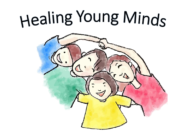There is no doubt that the use of electronics now forms an integral part of the day to day activities of most households, and in particular children and young people. There have been some interesting debates on the pros and cons of technology, social media, and internet use. Some research has been conducted and this article summarises some of the findings of recent research particularly with regards to the impact of technology on children’s cognitive, social, and emotional development. For more detailed information and references visit https://www.rcpsych.ac.uk/improving-care/campaigning-for-better-mental-health-policy/college-reports/2020-college-reports/Technology-use-and-the-mental-health-of-children-and-young-people-cr225
Negative Effects of Electronics Use on the Mental Health of Children
Early Development
There is some evidence that screen time may impact on early development. This is mainly due to the missed opportunities to practice and develop communication, motor, and interpersonal skills which is likely to happen if children are spending their time watching screens. The WHO has recommended that one-year-olds should not have access to screen time and two to four-year-olds should only have a maximum of one hour a day although ‘less is better’. Further research is needed to find out whether more vulnerable children, such as children with neuro-developmental conditions, are more susceptible to the negative effects of screen time.
Sleep
There are a number of ways in which the use of electronics can impact sleep. Children and young people may be reluctant to put away their electronic devices at bedtime. This may be due to a fear of missing out on social media platforms or an unwillingness to stop gaming. Artificial screen light may also interfere with the child’s ability to get off to sleep. One large study identified that both daytime and night-time use of electronics had a negative impact on teenagers’ sleep onset and sleep duration.
Eating Disorders
Viewing airbrushed and photoshopped images of celebrities online has been linked to a negative body image and disordered eating in young girls. Comparisons on social media may also have similar effects. Young victims of cyberbullying report higher rates of disordered eating and body image issues. Unfortunately, there are also websites that actively promote eating disorders, especially anorexia.
Depression and Anxiety
The relationship between the use of technology and depressive symptoms in young people is complex and depends largely on the content being accessed as well as factors relating to the young people such as their level of social adjustment. Studies have found an association between the use of social media in particular and an increased risk of emotional problems, particularly in girls. Positive interactions, social support and social connectedness were related to lower levels of depression and anxiety whereas negative interaction and social comparisons were related to higher levels of depression and anxiety.
Inattention and Behaviour Problems
Studies have identified a link between screen time use and inattention, poorer academic achievement, and behavioural problems in children and young people. Media multi-tasking, frequent smart phone notifications, and constant access to readily available information online, have been shown to contribute to a short attention span with difficulties sustaining concentration, increased distractibility, and reduced memorising abilities.
Excessive Gaming
Excessive gaming is associated with abnormal resting state activity in the areas of the brain that are responsible for impulse control and reward, similar to the picture seen in individuals with addiction problems. There is some evidence that children and young people who have anxiety, depression and ADHD may be more vulnerable to problematic technology use including excessive gaming.
Safeguarding and Online Safety
There is growing concern about the content available to children and young people online, the risk of online grooming, bullying, harassment, and exploitation, and the risks associated with targeted online advertising. Young people who are vulnerable due to neurodevelopmental or mental health conditions are at a greater risk of harm online. These children and young people may be spending more time online due to their anxieties and social difficulties and may be more vulnerable to various kinds of exploitation due to their limited social awareness and difficulties with social communication and with reading other people’s intentions. They may be more easily led into engaging in harmful behaviours online.
5 Guidance Points for Parents
- 1. Remember that the younger the child, the easier it is to encourage good habits around screen time use so start early.
- 2. Set screen time boundaries and enforce these consistently. For example, all screens should be kept out of a child’s bedroom and children should have at least one hour away from any electronics before bedtime.
- 3. Try to encourage activities away from technology such as outdoor sports, music, art and crafts, family games and outdoor play dates.
- 4. You can model a balanced approach to screen time use yourself by monitoring your own use of electronics, thereby setting a good example.
- 5. Think about your child’s online safety and use parental controls and encourage open discussions about your child’s online activity such as who has been talking to them, and the content they are exposed to. Ensure that your child is using age-appropriate apps and games. It is not advisable for a child to have social media accounts before the age of thirteen.
Need further help?
Please feel free to click here to contact our clinic and book an appointment with one of our specialist psychiatrists. We are here for you 🙂

